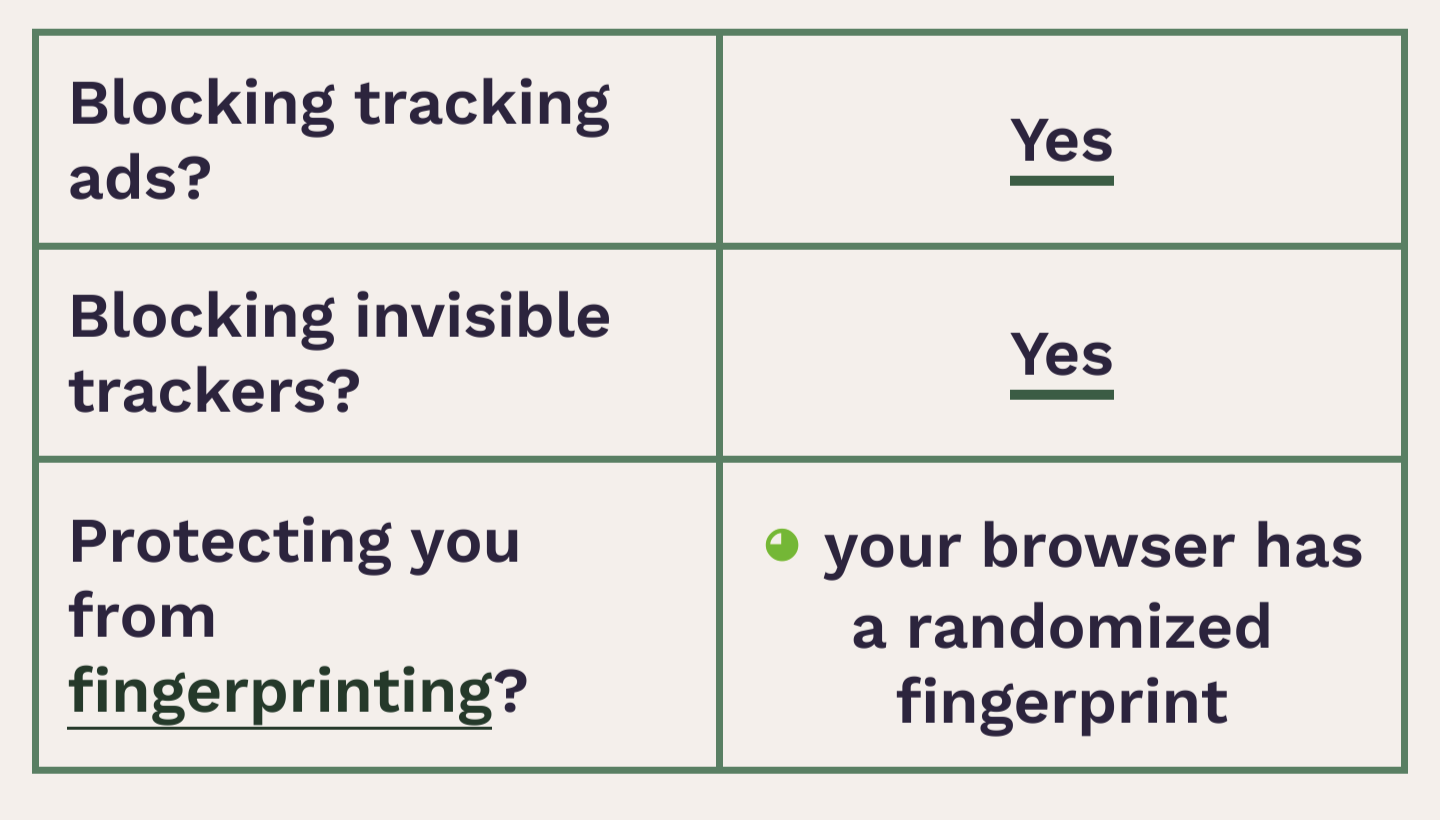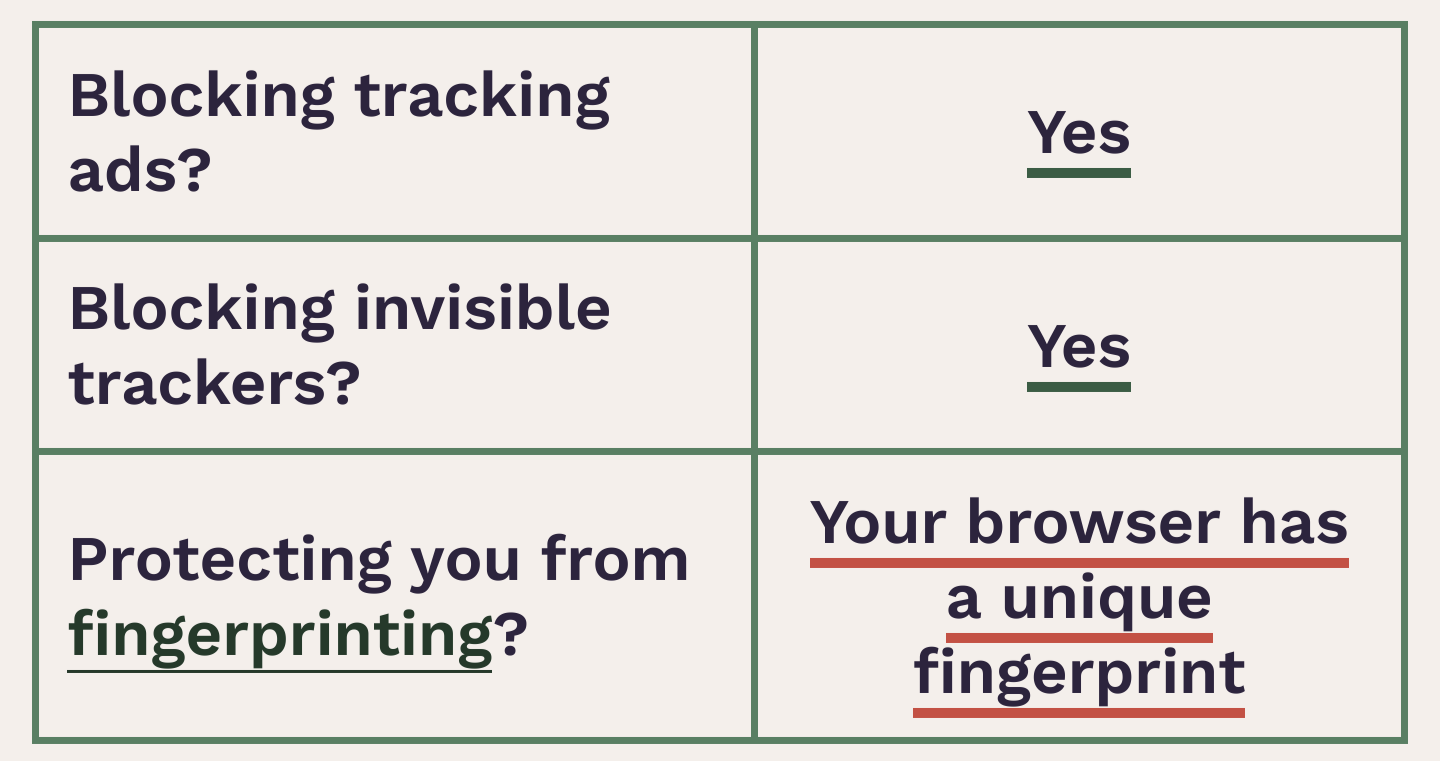scroll down and see which fingerprinting parameter gives you away
I've done that, and it's a little of everything. The page doesn't offer any advice on how to address anything.
The biggest ones are screen size and user agent. User agent can be faked with an extension. I can't exactly change my screen size.
I don't know what exactly what I did, but I managed to improve to "nearly unique" in IronFox. I think all I did was install Cookie Autodelete. It's an extension I've used for a long time in Mull, and finally got around to installing it. Then I installed "User-agent Switcher" and chose a Chrome user-agent and now I'm back to "Unique". 🤔
For the screen size, it's not actually the screen but the window, which is why tor browser opens in a fixed window size. If you just maximize, even though many use 1080p monitors, your particular settings of your DE give you away (size of bars, window decorations, ...)
The user agent string from each browser
The HTTP ACCEPT headers sent by the browser
Screen resolution and color depth
The Timezone your system is set to
The browser extensions/plugins, like Quicktime, Flash, Java or Acrobat, that are installed in the browser, and the versions of those plugins
The fonts installed on the computer, as reported by Flash or Java.
Whether your browser executes JavaScript scripts
Yes/no information saying whether the browser accepts various kinds of cookies and "super cookies"
A hash of the image generated by canvas fingerprinting
A hash of the image generated by WebGL fingerprinting
Yes/no whether your browser is sending the Do Not Track header
Your system platform (e.g. Win32, Linux x86)
Your system language (e.g. en-US)
Your browser's touchscreen support
I suspect they're multiplying all of the 1-in-X probabilities, and if they come up with less than 1-in-8 billion, then they call that unique. If they were actually comparing your values against a hash of previous visitors, then the second time you visit, you'd no longer be unique.
eta: screen size and various hardware measures are probably the lowest probability fingerprints, but they're all highly correlated - there's a few million Pixel 7's out there, but you've probably got like 1-in-1000 screen size and a couple other 1-in-500+ hardware, and that would push you to "1-in-billions," even though there's millions of people with the same fingerprint.
Why is it so hard to not be fingerprinted. Surly if everyone generated enough noise then it would be impossible?
Thing is most people just don't care, and don't understand it. Also, it turns out it's really easy to fingerprint people. Your list of installed fonts alone is enough to fingerprint you in many cases, and it's easy to figure out your entire list of installed fonts with JavaScript.
Add a few more data points like screen size and resolution, user-agent, and you can fingerprint 90% of people. And if that's not enough, every device—even individual video cards of the same model—renders an HTML canvas differently enough that it's detectable.
It turns out it's very hard to not be completely unique when you add all the up.
I feel like it should be a crime to do fingerprinting like this, and to grab and store the browsing habits of every citizen for their whole life, but this is America (for me), and it's never going to change.
Privacy
A community for Lemmy users interested in privacy
Rules:
- Be civil
- No spam posting
- Keep posts on-topic
- No trolling

